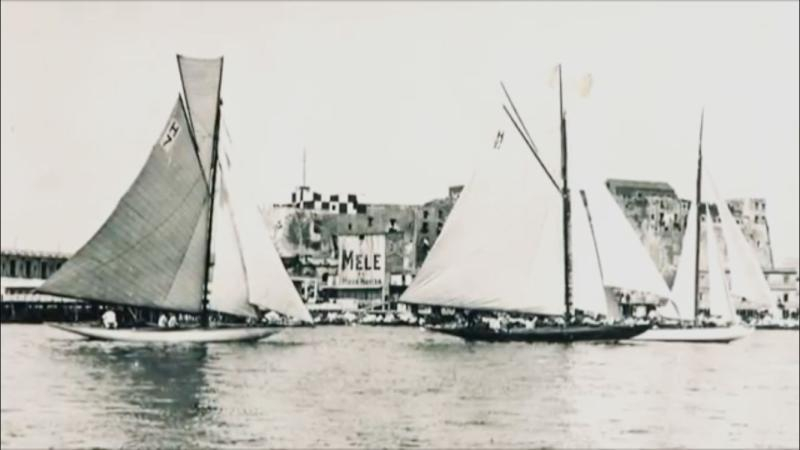The advertising strategy of Magazzini Mele has its most effective synthesis in the splendid posters
the spearhead of the prestigious image of the Department Stores.
The Mele company, positioning itself as a forerunner in quality Italian advertising commissions, entrusted its representation to illustrators and designers of notable prestige, whose names are linked to the birth of the modern poster in Italy.

Magazzini Mele advertisement among the cutters racing in the Gulf
The artists who signed the Ricordi posters for the Mele company are the greatest representatives of Italian poster art between the nineteenth and twentieth centuries:
A. Beltrame, P.L. Caldanzano, L. Cappiello, S. De Stefano, M. Dudovich, F. Laskoff, G. E. Malerba, A. L. Mauzan, A. Mazza, L. Metlicovitz, E. Sacchetti, A. Terzi, A. Villa.
The Mele posters are unanimously considered among the most interesting advertising posters of Italian production between the two centuries. The first fact that emerges when observing them is that the privileged object of advertising representation is fashion in all its seasonal variations.
The Magazzini Mele immediately stood out for their modern structure which was based on a wide variety of items (over a thousand). From clothing, linen, furniture, gift items, perfumery to the production of watches and champagne from the Mele winery.
The Mele brothers saw poster art as an effective advertising tool. They did not neglect the technical creation of the posters, establishing a long-lasting relationship with the Officine Grafiche Ricordi of Milan which already had the most modern technologies at its disposal. Season after season, the posters of the Mele company aroused admiration for the creative originality and beauty of their visual language, offering a mass audience the refined and captivating image of the aristocratic world of the past.
Looking at the advertised images, the consumer identifies in Mele clothing products a way to indirectly enjoy the lifestyle of good society, beyond the distance and inaccessibility of the boxes of the Opera House and aristocratic parties. Casa Mele's ingenious advertising stunts reveal the "trick" of using images that represent a socially elevated world as a technique to attract consumers. In the figurative text of the poster the spectator becomes part of universes that belong to cultures and classes that are not always his own but which he can symbolically access thanks to taste.



